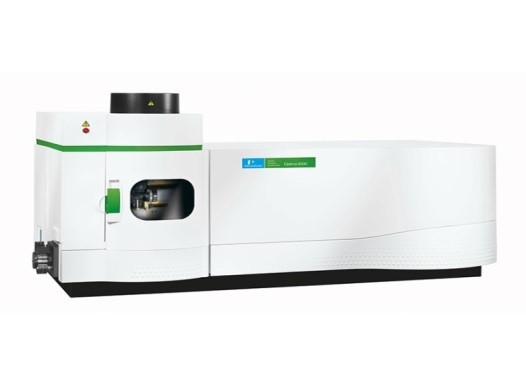Semiquantitative emission spectral analysis (SQESA)
Until the present, this method has been a universal express method used at all stages of geological surveys and exploration to determine more than 30 elements with contents from 10-6-10-5% to 10%, although it is inferior to chemical analysis in accuracy. SQESA can be extremely effective as a preceding one for choosing the optimal quantitative method (assessment of matrix composition, level of elements of interest, presence of interfering elements and their grade). The Laboratory uses two versions of this method, which differ in the way of sample introduction into the arc discharge: evaporation from the carbon electrode channel and sample powder spilling into the arc discharge. The option of evaporation from the electrode channel is preferable for determining elements with high vapour pressure (so-called “difficultly volatile”: Zr, Hf, Nb, Ta, Be, REE, U, Th), as well as in the case of a small amount of sample material; the spill option is characterized by lower detection limits of so-called “easily volatile” elements (Ag, As, Cu, Cd, Bi, Ge, In, Pb, Sb, Te, Tl, Zn) and the best reproducibility of the analysis results compared to channel evaporation. The accuracy of both SQESA options is category V according to OST 41-08-212-82.
Minimum analytical aliquot: 30 mg for evaporation from the electrode channel; 400 mg for spilling.
Content Intervals determined by SQESA
|
Component to be determined |
Evaporation from the channel |
Spilling |
|
SiO2 |
0.01 - 50 % |
|
|
ppm |
ppm |
|
|
Sr |
100 – 100000 |
50 – 100000 |
Note: 1 ppm = 1´10-4%
The Laboratory also performs SQESA of minerals (rock-forming and ore-bearing) and rocks from microaliqouts from 1 mg. Conditions and details of this kind of analyses should be previously agreed by the Customer with the Laboratory management.
Basic physical and chemical methods of analysis
Main physicochemical methods used in the CL include inductively coupled plasma atomic emission spectrometry and mass spectrometry (ICP AES and ICP MS), as well as atomic absorption spectrometry (AAS). Objects to be analyzed are water samples (potable, natural, waste) and powder samples of rock, ore, soils, bottom sediment. Before being analized, such samples must be transferred to the solution.
Main methods of sample decomposition and transfer to the solution
The following dissolution techniques are used:
For sample decomposition and preparing solutions, we use High Pure acids with additional purification - distillation using BSB-939-IR manufactured by Laborprodukte GmbH., Germany, and highly purified deionized water (water purification station made by Labconco, the USA). Quantitative emission spectral analysis (QESA).
Inductively coupled plasma atomic emission spectrometry
The NPTIMA-8300 ICP spectrometer manufactured by Perkin-Elmer (2017) with improved technical characteristics provides high measurement accuracy and reliable results, improved detection limits and an extended dynamic range.

Optima 8300 Inductively Coupled Plasma Atomic Emission Spectrometer
The CL uses the methodology developed and certified by the VSEGEI CL: VSEGEI MP No. 11/2010 “Determination of macro- and microelements in rock, soil, ore, bottom sediment samples with inductively coupled plasma atomic emission spectrometry, third category of accuracy.
Lower determination limits achieved with the OPTIMA-8300:
|
No |
Element |
Range, % wt |
No |
Element |
Range, % wt |
||
|
Minimum |
Maximum |
Minimum |
Maximum |
||||
|
1 2 3 4 5 6 7 8 9 10 11 12 13 14 15 16 |
Al Ag Ba Be Bi Са Cd Co Cr Cu Fe Ga Ge K Li Mg |
0.01 0.0001 0.0003 0.00005 0.0002 0.01 0.00005 0.00005 0.0001 0.0001 0.01 0.0001 0.0001 0.01 0.0001 0.001 |
30 0.1 1 1 1 50 0.1 1 1 1 80 0.1 0.1 10 1 50 |
17 18 19 20 21 22 23 24 25 26 27 28 29 30 |
Mn Mo Na Ni P Pb Sb Sc Si Sn Sr Ti V Zn |
0.001 0.00005 0.01 0.0001 0.001 0.0001 0.0002 0.00002 0.01 0.0004 0.00001 0.001 0.0001 0.0001 |
10 1 10 1 2 1 1 0.1 80 1 1 10 1 1 |